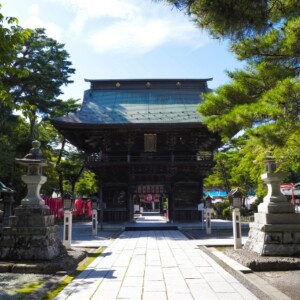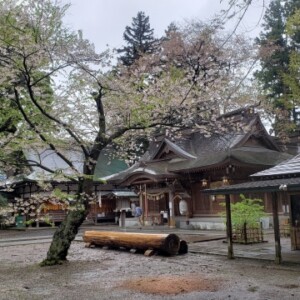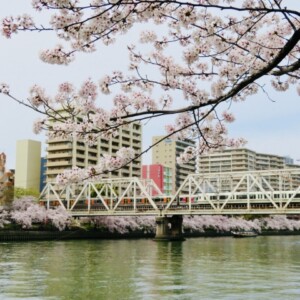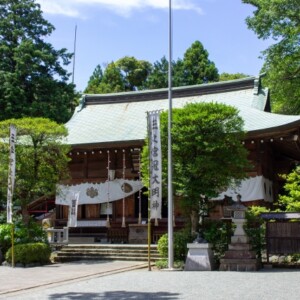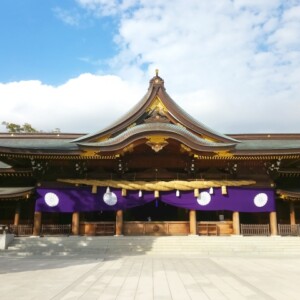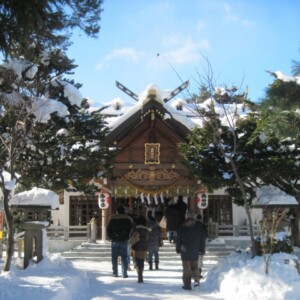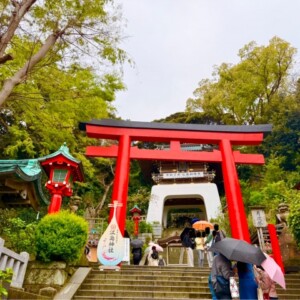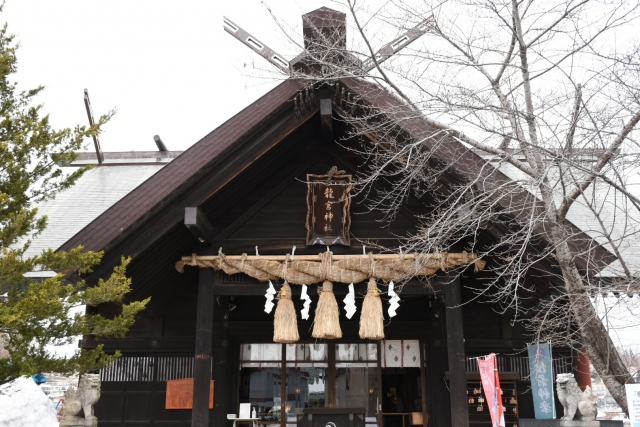
Ryugu Shrine|A complete guide to the history, highlights, and worship information of this historic shrine associated with the development of Hokkaido
Ryugu Shrine in Otaru City is a historic shrine founded by Takeaki Enomoto, a well-known samurai in the late Edo period. Dedicated to Watatsumi-kami, the god of the sea, the shrine is popular among many worshippers for its blessings of good fortune and success in life. It is one of Otaru’s representative shrines, famous for its valuable cultural assets from the pioneer days of Hokkaido and for its dedication of Matsumae Kagura, a national Important Intangible Folk Cultural Property.
Outline and Basic Information on Ryugu Shrine
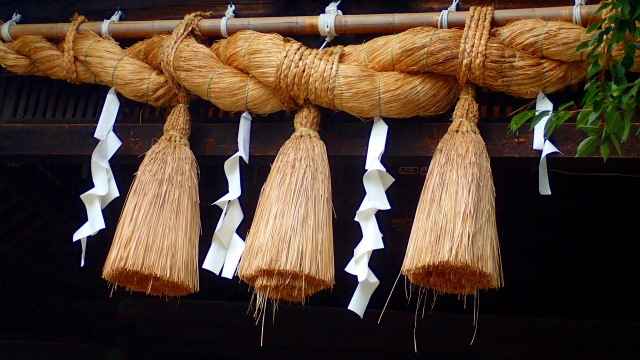
Ryugu Shrine is located in Inaho, Otaru City, Hokkaido, and is formerly known as a township shrine. Conveniently located only a 3-minute walk from Otaru Station, the shrine holds many valuable cultural assets that tell the story of Hokkaido’s pioneering history. Today, the shrine has approximately 4,000 households as Ujiko, and is well known as a spiritual support for the local people.
History and Origin
The history of Ryugu Shrine dates back to 1869, when Takeaki Enomoto established a small shrine and dedicated it to his distant ancestor, Emperor Kanmu, on the occasion of the dispossession of state-owned land in the 2nd year of Meiji (1869). Takeaki Enomoto is known as the leader of the former shogunate forces in the Hakodate War, but after being appointed by the Meiji government, he devoted himself to the development of Hokkaido.
In 1869, he acquired a large tract of land in the Inaho-machi area, where the Tatsumiya Shrine is located today, through the dispossession of state-owned land, and set about developing the area. In 1876, he built Tatsumiya Shrine to provide a spiritual center for the people who had moved to this still empty land.
The name of the shrine has an interesting origin. At that time, there was a shrine in Esashi Town called Ryugu Church, which was deeply believed as a god of the sea. When the Emperor Meiji made a pilgrimage to Hokkaido, he received a handwritten inscription “Ryugu Palace” from Prince Kichihito Arisugawa, who accompanied him, and the name was adopted in 1882. Later, Prince Sanetaka Ichijo wrote “Ryugu Shrine” and “Keishin” in his own hand, and the name was changed to Ryugu Shrine in 1916.
Gods of worship and benefits
The shrine enshrines three Wadatsumi deities, Sokotsu Wadatsumi, Nakatsu Wadatsumi, and Kamiotsu Wadatsumi, as well as Toyokehime no Mikoto, Omotonushi no Mikoto, Ohbiko-no Mikoto, and Emperor Kanmu.
Watatsumi-no-kami, the main deity, is known as the god of the sea and is believed to bring good fortune in shipping and business. This is a deity befitting the history of Otaru, which prospered as a gateway to the sea.
Of particular note are the blessings for good luck and success in life. The Onko tree, planted by Taro Aso, the 92nd Prime Minister of Japan, is located in the precincts of the temple. The year after the Onko tree was planted, Taro Aso became the Prime Minister of Japan, and the shrine is said to be blessed with good fortune for promotion and success in life.
Highlights and Features of Ryugu Shrine
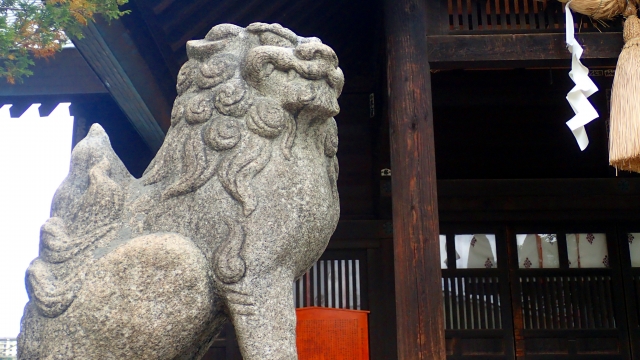
Despite its small size, Tatsumiya Shrine is a shrine with a wide variety of attractions, including valuable cultural assets and traditional performing arts from the Hokkaido pioneer period. The shrine continues to be loved by many visitors and tourists as a valuable place to experience items related to Takeaki Enomoto and traditional Hokkaido culture up close.
Architectural and Structural Attractions
The shrine pavilions of Ryugu Shrine are of the Shinmei-zukuri style, with a shrine area of 50 tsubo and a precinct area of 535.1 tsubo. Located on a hill looking up from Otaru Station, the shrine is situated on a hill overlooking the sea, and visitors are welcomed by a tin cane tree, which is the sacred tree of the shrine.
The temple grounds offer a panoramic view of Otaru’s cityscape and harbor, and since it is located overlooking the railroad tracks, it can be used as a little photo spot for railroad enthusiasts. You can enjoy the beautiful scenery of Otaru together with your visit to the shrine.
In front of the shrine pavilion, a calligraphy handwritten by Takeaki Enomoto, which was dedicated to the shrine, is displayed. The calligraphy “Hokkai Chingo” written by Takeaki Enomoto is displayed, and visitors can feel his passion for the development of Hokkaido.
Cultural Properties Related to Takeaki Enomoto
The greatest feature of Tatsumiya Shrine is the many valuable cultural assets related to Takeaki Enomoto, the founder of the shrine. Since the shrine was built by Takeaki Enomoto, who contributed to the development of Hokkaido, the shrine is also characterized by the fact that Takeaki Enomoto’s beloved sword and calligraphy are housed here.
Of particular note is the “Ryusei-tou” (shooting star) sword. The Meteor Sword, which was Takeaki Enomoto’s favorite sword, is said to have been made from a meteorite, and is a rare treasure that is open to the public only during special periods of the year. The calligraphy of Takeaki Enomoto and the “Meteorite Sword,” which is said to have been made from a meteorite, remain in the museum.
A statue of Takeaki Enomoto is also enshrined in the temple grounds. The statue is an important viewing point for visitors, who can remember the achievements of Takeaki Enomoto, who devoted himself to the development of Hokkaido.
Matsumae Kagura and Traditional Performing Arts
The Matsumae Kagura (Shinto music and dance) dedicated at Tatsumiya Shrine is highly regarded as a valuable cultural heritage of Hokkaido. Matsumae Kagura is dedicated at the festivals of Tatsumiya Shrine. This Matsumae Kagura is one of Hokkaido’s representative traditional performing arts and was designated as a National Important Intangible Folk Cultural Property in 2008.
With a history of over 500 years, Matsumae Kagura is one of the highlights of the Tatsumiya Shrine festival. The sight of the Shinto priests themselves dancing and playing musical instruments gives the performance an ancient, traditional, and fantastic atmosphere. The ability to view this traditional and rare cultural heritage of Hokkaido up close is a unique attraction of Tatsumiya Shrine.
Matsumae Kagura is performed on important days such as the annual festival and New Year’s Day. Those who wish to observe the performance are encouraged to visit in conjunction with the shrine’s events.
Guide to Worship and Visiting the Shrine
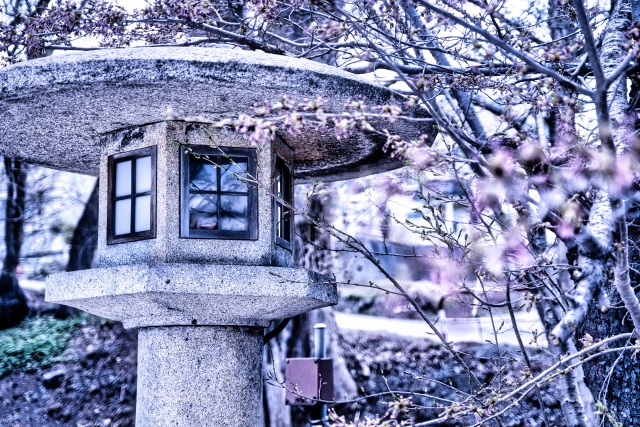
As a shrine rooted in the community, Ryugu Shrine warmly welcomes many worshippers every day. It is a precious place where visitors can worship in peace and quiet while experiencing the history of Hokkaido’s pioneering development. When visiting the shrine, it is important to respect the history and traditions of the shrine and to visit with good manners.
Worship Etiquette and Manners
Visiting Ryugu Shrine is done according to the general manners of shrine visitation. First, bow as you pass through the torii gate and walk along the edge of the approach to the hall of worship. After purifying your hands and mouth at the hand- and mouth-watering booths, you should bow in front of the hall of worship in the manner of “ni-sho, ni-sho, ni-sho, ni-sho, ni-sho, ni-sho.
Since Ryugu Shrine is located in a residential area, you should be considerate of your neighbors when visiting the shrine. Please refrain from loud conversations, and please be sure to visit the shrine in a quiet manner. Photography is allowed on the shrine grounds, but please be careful not to disturb other visitors.
Annual and Seasonal Events
The regular festival day of Ryugu Shrine is June 21. On this day, the most important festival of the year is held and the Matsumae Kagura (Shinto music and dance) is dedicated.
Even today, on the 20th of every month, a festival called “Otaru Prayer Festival for Prosperity and Good Health of Citizens” is held at the shrine, which has become a popular place for citizens to relax. This festival has become an important event to pray for the safety and prosperity of the community.
On New Year’s Day, a New Year’s Prayer Festival is held, attracting many first-time visitors. The Matsumae Kagura (Shinto music and dance) is also dedicated on this occasion, and visitors can enjoy the traditional dance to celebrate the New Year.
Red Seal and Good Luck Charm Information
Visitors can receive red seals at Tatsumiya Shrine from 08:30 to 17:00. The red seals at Ryugu Shrine are particularly popular, and the red seal with an impressive spread of powerful dragon characters is well-known.
There are two types of red seals, one for the dragon god and the other for the phoenix, and the initial fee is 600 yen. The initial fee is 600 yen, a very reasonable price in this era of skyrocketing prices, and is appreciated by many worshippers.
As the name suggests, Ryugu Shrine is associated with dragons. Therefore, visitors can purchase a variety of red seals, charms, and amulets with dragon motifs. The “Ascending Dragon Good Luck Charm” is a prestigious design with gold embroidery. The “Kinryu-mamori” and “Ginryu-mamori” with a fortune are also popular.
Access/Use Information
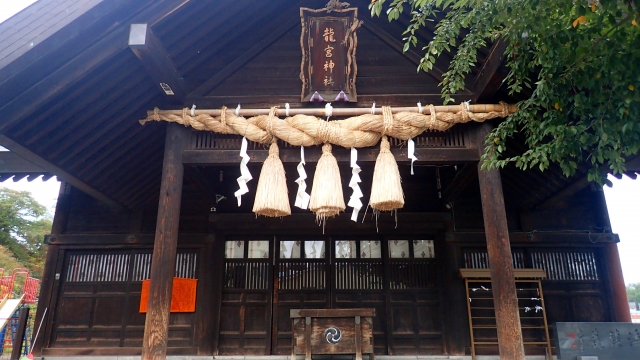
Ryugu Shrine is located within walking distance of Otaru Station, making it extremely accessible for sightseeing and worship. Public transportation is recommended to visit the shrine, and it is easy to stop by as part of your Otaru sightseeing tour.
Transportation Access
Access to Ryugu Shrine is very convenient, a 3-minute walk from JR Otaru Station. From Otaru Station, walk for about 5 minutes toward Yoichi, pass through the torii gate, and climb up the hill to reach Ryugu Shrine.
As for specific directions, exit Otaru Station and head to the left (toward Yoichi), and you will find the entrance to Ryugu Street just past the Triangle Market. Continue south on Ryugu Street, and the shrine is located on a hill after climbing a steep slope. The slope is rather steep, but the distance is short, and a person of average physical fitness can walk it without any problem.
To access the shrine by car, head uptown from National Route 5. However, since the area around the shrine is residential, be very careful when driving.
<Address> 3-22-11 Inaho, Otaru-shi, Hokkaido, 047-0032 Japan
Hours of Operation, Fees, and Parking Information
The precincts of Ryugu Shrine are open 24 hours a day, allowing visitors to come and visit at any time. However, the awarding office is open from 08:30 to 17:00, so those wishing to obtain a red seal or amulet are advised to visit during these hours.
There is no charge for visiting the shrine. The purchase of money or amulets is optional.
Parking is available for several cars on the shrine grounds, but the number is limited. Also, since the area around the shrine is residential, please avoid parking on the street, as it may be a nuisance to nearby residents. Public transportation is best suited to visit the shrine, as it is a short distance from Otaru Station.
For inquiries, please call 0134-22-4268. It is recommended to check in advance for details regarding worship and the schedule of events.
Reference sites
Ryugu Shrine official website: http://dragonjinja.ec-net.jp/
Hokkaido Jinja Agency: https://hokkaidojinjacho.jp/龍宮神社/
Ryugu Shrine – Wikipedia: https://ja.wikipedia.org/wiki/龍宮神社_(Otaru City)



